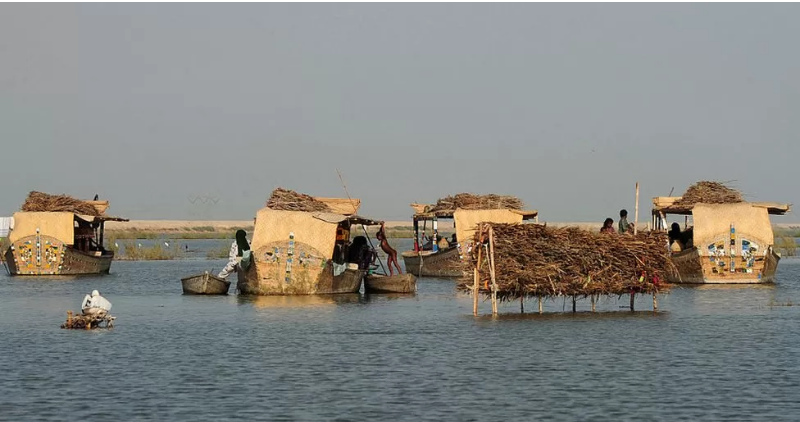Pakistan floods: Officials struggle to stop biggest lake overflowing

Pakistani authorities are struggling to stop their biggest lake from bursting its banks after last-ditch attempts to lower water levels failed.
Manchar Lake, in Sindh province, is dangerously full after record monsoons that inundated a third of Pakistan.
Three breaches of the lake’s banks so far – to protect areas downstream – have displaced 100,000 people.
But it could still overflow and rescue teams are racing to evacuate many more people who remain at risk of drowning.
Floods in Pakistan have affected some 33 million people and killed at least 1,314, including 458 children, Pakistan’s National Disaster Management Agency said.
Estimates suggest the floods have caused at least $10bn (£8.5bn) of damage.
Sindh province produces half of the country’s food supply, exacerbating fears that many will face serious food shortages in a country already struggling with an economic crisis.

On Sunday, officials breached Manchar lake after it had flooded two rural towns, in the hope that it would prevent it from further bursting its banks and inundating more densely-populated areas.
The move affected an estimated 400 villages – a total of 135,000 people. The decision to deliberately flood some villages is a controversial one – the lake straddles two districts, Dadu and Jamshoro, both home to hundreds of thousands of people and about 80% of the region is underwater.
Villagers affected by the deliberate breach were warned to evacuate. But local sources say not everyone was taken to safety in time – some didn’t want to leave their homes or livestock, a lifeline for many in rural communities, and there are few places for them to go.
The military has been brought in to help with evacuations but mostly locals are coming to each other’s aid.
Many displaced people are living on the roadside without shelter, food or clean drinking water. Officials have said a little over a quarter of a million people are in shelters, a fraction of the 33 million Pakistanis affected.
Relief efforts can’t keep pace with demand – there is simply too much need and too few resources.
Damaged infrastructure is also hampering aid and rescue operations. Some connecting roads in Sindh province have either collapsed, are flooded or are backed up for days with queuing traffic.
Pakistan is facing one of its worst climate-induced natural disasters in years, as record torrential rainfall and melting glaciers in the country’s northern mountains have caused devastating floods and submerged almost a third of its territory underwater.
Meanwhile, UN children’s agency Unicef said more children were at risk of dying from disease in Pakistan due to the shortage of clean water.
The disaster has also highlighted the stark disparity between countries that are the largest contributors towards climate change and countries that bear the brunt of its impact.
Pakistan produces less than 1% of global greenhouse gas emissions but its geography makes it extremely vulnerable to climate change.



